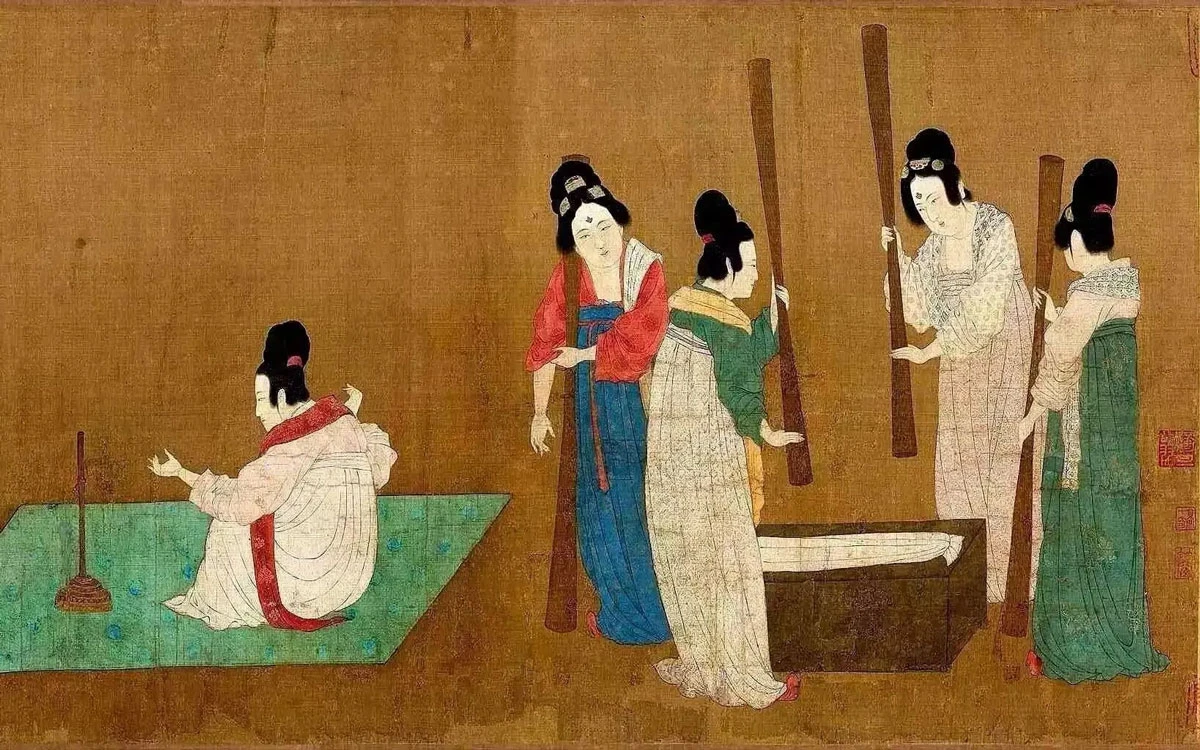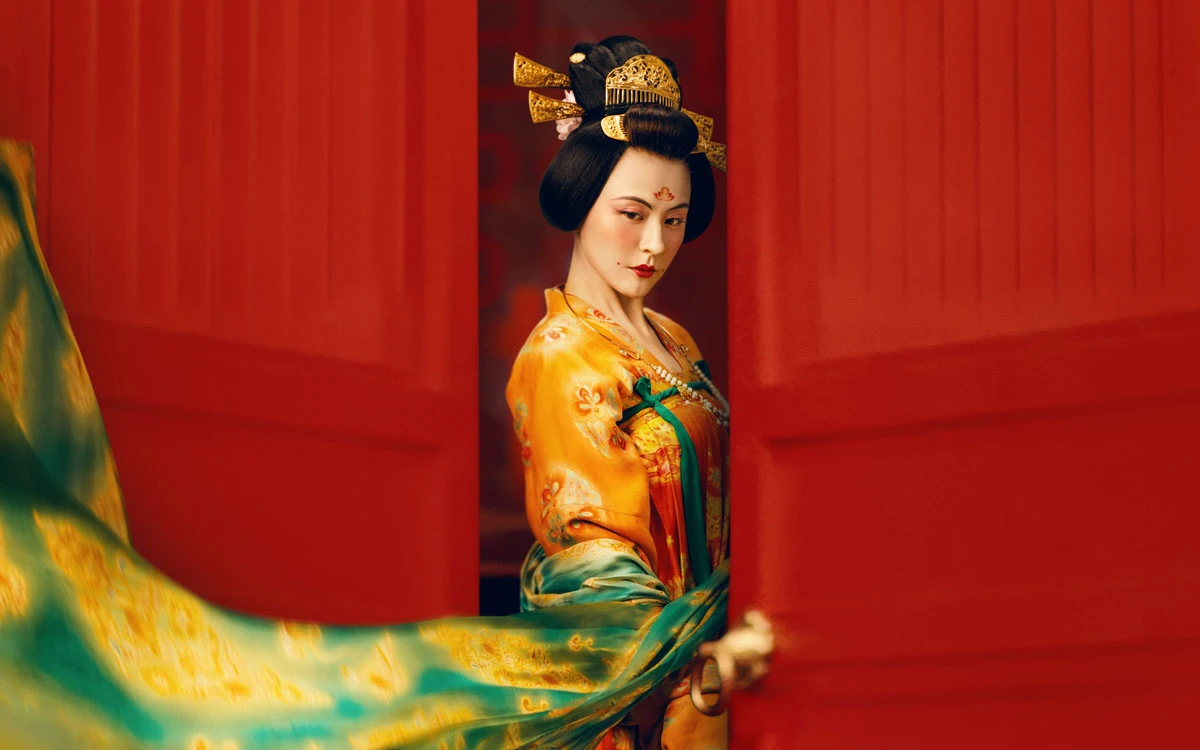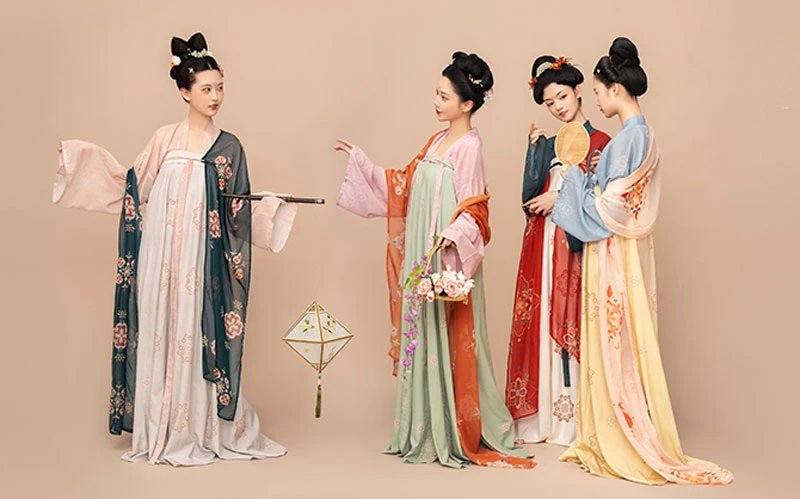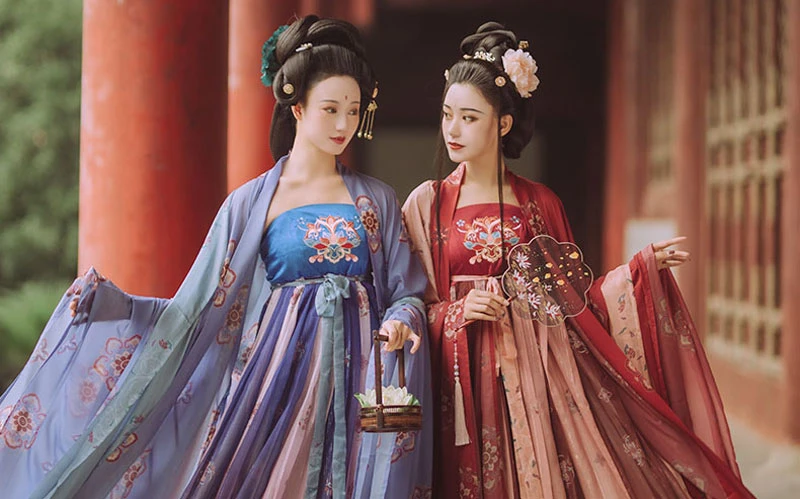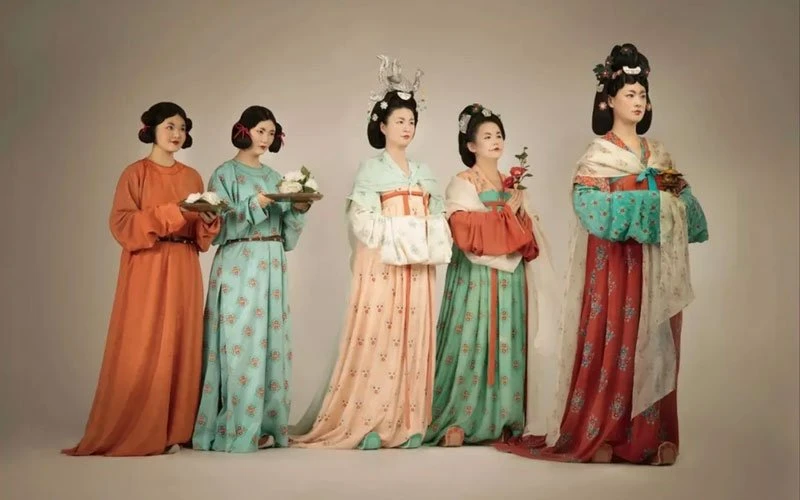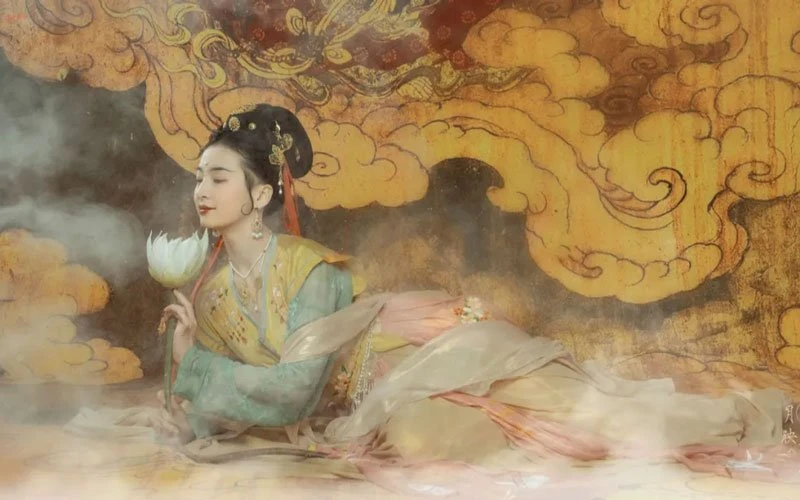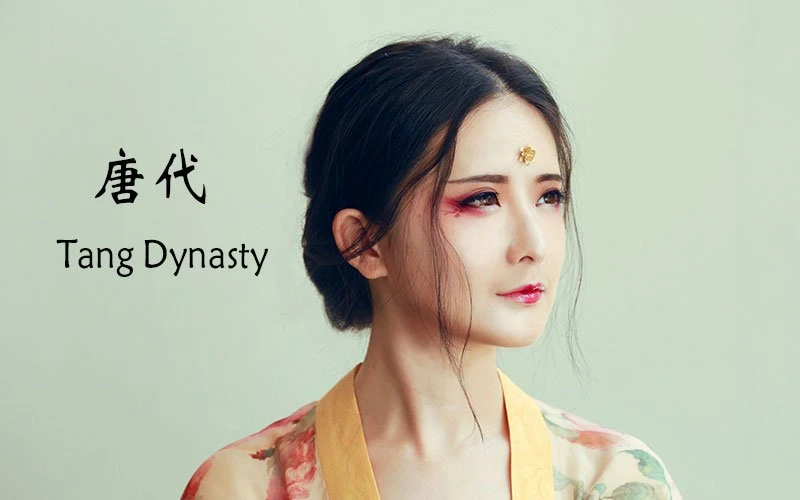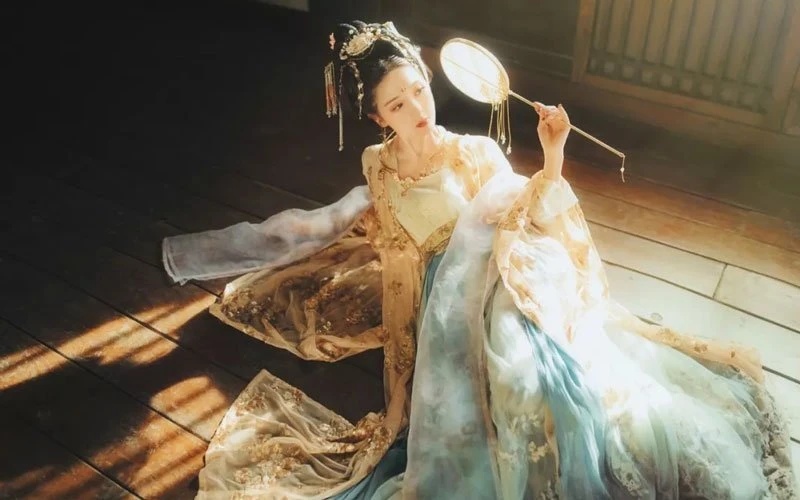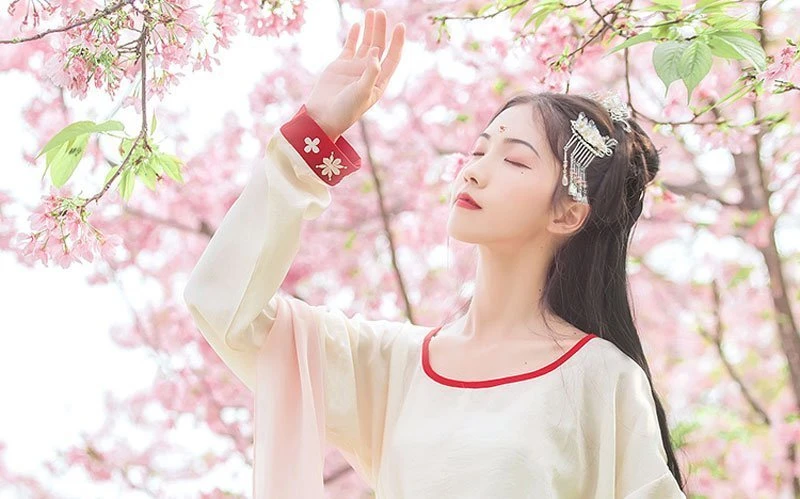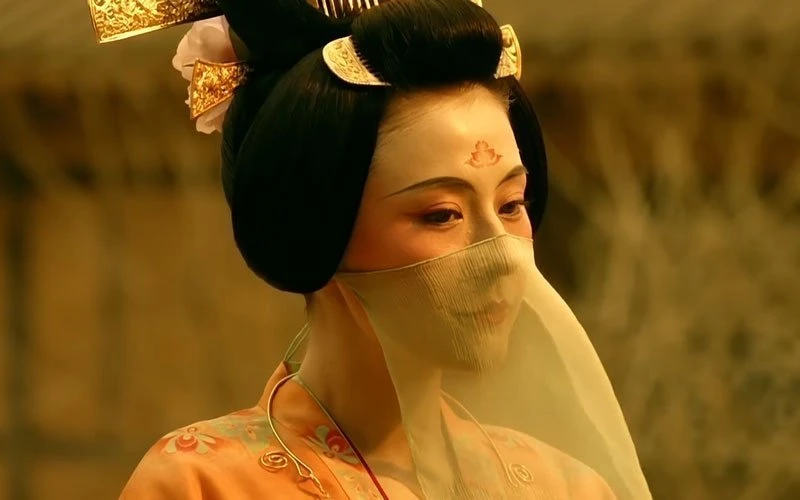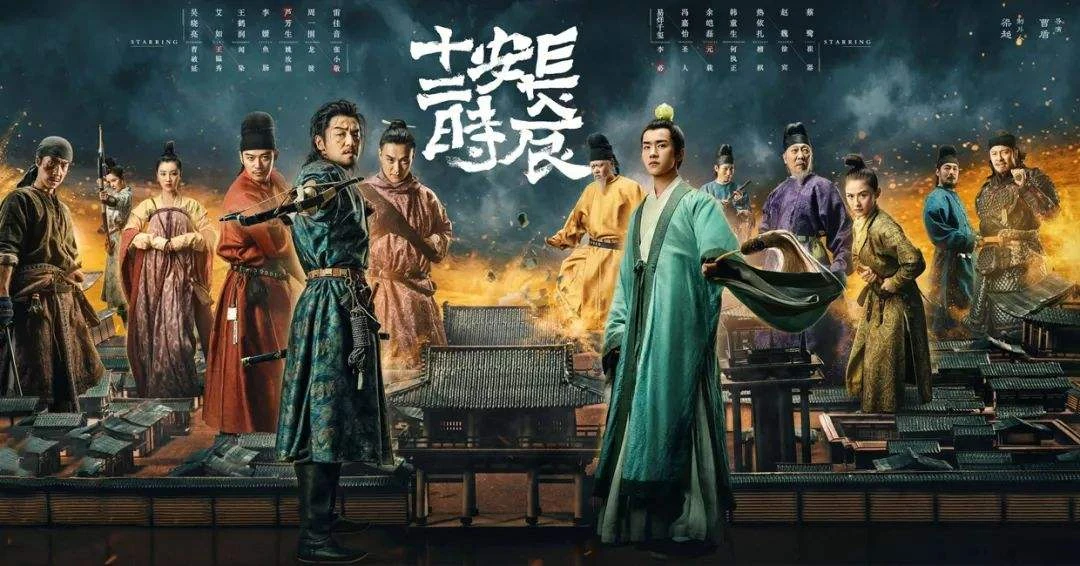-
Hanfu Unearthed IV: Tang Dynasty Relics in Astana Cemetery and Shosoin Repository
Haha so I lied in the last article, we’re actually doing the Tang Dynasty next! This is for sure going to be a favorite of everyone—after all, who can resist the flamboyant, vibrant beauty of the Tang Dynasty? Let’s get right to it and see where some of our favorite Tang Dynasty hanfu comes from. The Tang Dynasty was a period of time (618–907CE) preceded by the Wei/Jin Northern and Southern Dynasties and proceeded by the Five Dynasties Ten Kingdoms period, and then the Song Dynasty (the Five Dynasties Ten Kingdoms period is often regarded as part of the Tang fashion period for hanfu purposes because the fashion trends followed pretty closely). A flourishing golden age for China, the Tang Dynasty saw leaps and bounds in art, poetry, and exchange of culture—the most open-minded society that has existed in the world in a very long time. People freely exchanged cultural norms, aesthetics, and ideas between nations from the Silk Road and beyond, resulting in a blossoming of the world of clothing as well, and a rich collection of art for us to reference our hanfu off of. Astana Cemetery Interestingly, not a lot of clothing of the Tang Dynasty…- 1.1k
- 0
-
Detailed Introduction of Tang Dynasty Female Hairstyles
The pursuit of beauty is human nature. Beauty is not only a reflection of the mind, but also a reflection of the interest in life. Tang Dynasty women are the best representatives of beauty, because they inherited the mentality of "Dress up for those who like or admire yourself (女为悦己者容)" from ancient times, and pushed the beauty ideal realm to the highest level under the booming economy and the open and tolerant social atmosphere. Lively, dignified, noble, the endless types of Tang Dynasty female hairstyles, paired with exquisite makeup, made many literati and scholars unstinting in their talent to depict the Tang women's style. Let's follow ArtMoment to go back thousands of years ago, and enjoy the beauty of Tang female hairstyles in that remarkable era of spiritedness. Ancient Hairstyle Tips What are Ji and Huan? The ancient Chinese women's hairstyle is commonly known as Ji Huan (髻鬟, jì huán), and according to the method of combing, there are two types of Ji (髻, jì) and Huan (鬟, huán). Ji, solid hair bun, suitable for ordinary women; Huan, ring-shaped hair bun, suitable for young girls. What does the change of hairstyle mean? In ancient China, a woman's hairstyle changed with…- 5.9k
- 3
-
History of Chinese Dress: Kaleidoscope of Tang Costume
In terms of the cultural and economic development of Chinese feudal society, the Tang Dynasty was undoubtedly an apogee in the development of human civilization. The Tang government not only opened its country to the outside world, allowing foreigners to enter for business or study, but even allowed them to participate in the selection examinations for government officials. It was tolerant, and often appreciative of religions, art and culture of the outside world. Chang'an, the Tang capital, became the center of exchanges between different cultures. It deserves special mention that women of the Tang dynasty did not have to obey traditional dress codes, but were allowed to wear clothing that exposed their arms and chest, or dress with exotic elements. They could also wear riding clothes if they wanted to and enjoyed the freedom to choose their marriage and to divorce. The abundance of materials and a relatively relaxed social environment gave the Tang dynasty an unprecedented opportunity to develop culture, reaching new heights in such fields as poetry, painting, music and dance. Based on the development of the textile industry in the Sui Dynasty, and progress achieved in reeling and dyeing, the variety, quality and quantity of textile materials…- 1.9k
- 2
-
What is Hezi Qun - Origins and Types
Hezi Qun (诃子裙), a kind of Moxiong long skirt with a big-sleeved shirt, has suddenly become a popular hanfu style for summer. Perhaps your initial impression of it is that it is one of the Tang Dynasty hanfu styles. But it's much more than that, and today we're going to introduce you to the origin and types of the Hezi Qun in more detail. Let's get started. 1. What is Hezi Let's first understand what Hezi is. Hezi(诃子) is one of the ancient Chinese women's undergarments, also known as "Waxiong (袜胸)", "Moxiong (抹胸)", "Lanqun (襕裙)", "Hehuan Lanqun (合欢襕裙)", and so on. It was popular in the Tang, Song, and Ming dynasties. From the back to the front of the bundle, the following line, can also be tied around the waist of the skirt, also known as the Dudou (肚兜) in the Qing Dynasty. Originally, Hezi had little to do with hanfu. In most of the ancient literature, Hezi is a kind of traditional Chinese medicine. The earliest documentary record about Hezi and hanfu is found in the Song Dynasty. Song dynasty Zeng Zao in his book "Lei Shuo (类说)" has recorded: one day, Yang Guifei and An Lushan had a…- 3.6k
- 4
-
8 Different Styles of Tang Style Hanfu for Girls
This year, Tang Dynasty Hanfu has quietly become popular. In addition to the familiar Qixiong Hanfu, there are more and more styles of Tang Beizi (背子). Playful and lovely, the style is versatile, soft and cute, fresh and flashy ...... all kinds of styles can be found in the Tang style Hanfu. Today for you to select 8 Tang Dynasty women's Hanfu, if you also like Tang style Hanfu, don't miss it. Elegant white and cuffs pink and blue two-color splicing design, elegant between adding the sweetness of girls. The body of the top uses the group flower print and embellished peony embroidery at the chest, a noble atmosphere without losing the spirit. The skirt with lilies and letterhead combined with lace check print design, showing the spring romance. Wearing a lovely Tang Beizi, just like a small princess of the Tang Dynasty. The hem of the Beizi adds pearl design, with a more lovely style, bow style pin buckle, add a spirited novelty to the clothing. The outer layer of tulle silver silk strung with gold beads under the skirt, a sense of girlhood. With a cute little bag, let's go for a spring trip. The…- 570
- 0
-
Types and Wear Styles of Tang Dynasty Women’s Clothing
Ordinary Tang dynasty women's clothing we are all familiar with, a short blouse, a long skirt, and then shawls, which is often referred to as "Tang Ru", "high-waisted Ruqun" or "shawls Ruqun". And so on with this set of clothing. But what exactly were these garments called in ancient times, and what were the specific wearing sequence? Let's take a look. The basic equipment of daily women's clothing in the Tang Dynasty is: shirt, skirt, and shawls. In addition, depending on the situation, they also included a Beizi, Mofu (陌腹, underwear), shoes and socks, etc. The following is a description of the types of Tang Dynasty women's clothing for daily and the way to match in the four seasons. Shanzi (衫子, shān zi, shirt) · Ru (襦,rú) Women in the Tang dynasty wore long-sleeved blouses with narrow sleeves and short bodies, now generally called "Ru (襦)", but according to Tang custom it should be called "Shanzi". Various Tang dynasty documents, unearthed clothing records and poetry novels in the costume vocabulary, mention of daily women's clothing, from the early to mid-to-late Tang dynasty, almost all the tops are "Shanzi". Shanzi were very short in length, mostly less than the waist, and…- 12.5k
- 5
-
Chinese Historical fashion Items for Tang Dynasty Women
As we all know, the Tang Dynasty had unprecedented national power, strong economic strength, people lived in peace and happiness, and the people's pursuit of fashion is also increasing. Today for you to introduce the women fashion items in the Tang Dynasty, let's take a look at Chinese historical fashion together. The Essential Diexie Belt (蹀躞带) for Tang Dynasty Women The movie "The Assassin" released in 2015, in which the female protagonist Nie Yinniang is dressed in a black robe, wearing a very fashionable belt at the waist, which is a popular "Diexie belt" in the Tang Dynasty. Diexie belt was originally a kind of waist belt of the Hu people, since the Wei and Jin Dynasty, introduced into the Central Plains, to the Tang Dynasty was once set as civil and military officials must wear something. An antique Tang dynasty Diexie belt, now in the Shaanxi Provincial Institute of Archaeology. It is 1.5 meters long and 1.2 centimeters thick and is made of white jade, some of which is light green. The jade belt is made of using traditional decorative techniques, inlaid gold in Hetian white jade, and the quality of the jade is warm, luxurious, and beautiful.…- 1.7k
- 1
-
How did the Tang Dynasty Hanfu Clothing Develop and Prosper?
The Tang Dynasty was the heyday of China's feudal society, especially during the years of Zhenguan (贞观) and Kaiyuan (开元) when the political climate was relaxed and people lived and worked in peace. The typical styles of the Tang Dynasty Hanfu are Gongfu (公服, official uniform), round-necked robe, Banbi (半臂), Pei (帔, large-sleeved formal dress), and so on. From the Sui to the Tang (618-907), the development of ancient Chinese Hanfu clothing reached its heyday, political stability, economic development, advances in production and textile technology, frequent foreign exchanges, etc. contributed to the unprecedented prosperity of clothing, clothing styles, colors, patterns, etc. were the unprecedented new situation. The women's costumes of this period are one of the most exciting chapters of Hans costume, with their rich beauty and splendor, and their exotic decorations are breathtaking. Chang'an in the Tang Dynasty was the political, economic, and cultural center of the time and, at the same time, the center of East-West cultural exchange. There were more than three hundred countries that had friendly relations with the government of the Tang Dynasty. The splendid Chinese culture, spreads to the world. To this day, some countries in East Asia still use the Tang Dynasty dress…- 1.7k
- 0
-
A Brief History of Tang Dynasty Clothing
Tang Dynasty clothing mainly refers to the Tang Dynasty Hanfu clothes. Tang Dynasty is a period of great prosperity of China's feudal society. Both people's thoughts and material production have reached the ancient historical peak. Since the Tang Dynasty, a large number of flower patterns have been widely used in craft decoration. Its composition is lively and free, dense and symmetrical, plump, and mellow. Especially after the combination of wavy continuous patterns and floral plants, it was the popular pattern in that period. The style of the Tang Dynasty clothing has taken real flowers, grass, fish, and insects for sketching, instead of the previous creative idea of the "Mandate of Heaven." Still, the traditional mythical animals, like dragon and phoenix pattern, has not been excluded. At this time, the design of costume patterns tends to express the free, open mind and casual artistic style. The Feature of Tang Dynasty Clothing In the Tang Dynasty, foreign trade was developed, and the country was peaceful for a long time. Especially when the Tang Dynasty became the center of economic and cultural exchanges among Asian nations, it was the most glorious page in the history of Asian history. This period absorbed Indian and…- 43.3k
- 8
-
Hanfu Photo Sharing of Ruqun-Return to the Tang Dynasty
Today, we share a group of photos of Ruqun, the posture and style is worth learning Ruqun has always been a popular style, put on your ruqun and take beautiful pictures~- 732
- 0
-
Amazed! Hanfu T-shirts were Available in the Tang Dynasty?
We have introduced Banbi (半臂) before, which is a kind of hanfu very suitable for wearing in summer. The tan collar introduced today is a small classification of Banbi. You will find that the shape of the tan collar is very similar to the collar of the T-shirt we usually wear. Tan collar (坦领), also known as U-collar, is a kind of short coat with a wide collar. Some of them cover it outside the skirt, some like today's short windbreaker. The lower body is matched with a long dress, which fully reflects the graceful posture and natural beauty of women in the Tang Dynasty. In the Tang Dynasty, the tan collar was more popular, not only for men and women but also for court uniforms. I spelled out a long picture to introduce it. It's easier to understand: Because of the wide popularity of Hu culture among different classes in the Tang Dynasty, it became a fashion hanfu for women to wear small sleeves in the Tang Dynasty. Popular in the Sui and Tang courts, and later spread to the folk, enduring. There are many conjectures about the origin of the tan collar. One conjecture is that the tan… -
What did the Tang Dynasty wear? | Chang'an Twenty-four Hours
Some time ago, I watched the hot Chinese drama Chang' a Twenty-four Hours (长安十二时辰). I was attracted by the hanfu of the Tang Dynasty in the play. So I did some research on the clothes and fittings of the Tang Dynasty. Let's see who is the most fashionable in Chang'an. Ruqun Talking about the trend of wearing and matching in the Tang Dynasty, it's natural that we can't do without ruqun. Ruqun is one of the most common and distinctive dresses in the Tang Dynasty. The main features of this dress are short clothes on the upper body and long skirts on the lower body. Some of them wear silk shoulders around their arms. Others wear half-arm outside the gown and then wear silk. "Ru (襦)" is for internal wear, sleeve length, upper and lower shorter, just to the waist. Long skirts were the clothes of women in the Tang Dynasty, most of which were made of silk. Skirt waist is high, can hide the chest, outside shoulder put on a yarn shirt, can make upper body skin half-covered, there is a kind of vague aesthetic feeling. Banbi (半臂) is a short-sleeved shirt, sleeve length to the elbow, knotted in…- 2.5k
- 0
-
The Longest Day in Chang’an: Perfect Reproduction of Tang Dynasty Hanfu
Recently, a TV play, "The Longest Day in Chang'an(长安十二时辰)" is very attractive! It tells the story of the hero defending Chang'an City from the enemy's destruction during the Tang Dynasty. In addition to the glamorous actors, the play also pays tribute to the culture and history of the Tang Dynasty, including traditional costumes, weapons, makeup, architecture and Lantern Festival costumes, which are carefully reproduced on the basis of historical data. Today, let's take a look at the Tang Dynasty hanfu in the TV series. Let's start with the Taoist costumes worn when Jackson Yi appeared. Because of the prevalence of Taoism in the Tang Dynasty, Taoist costumes can be divided into five parts: Tao scarf, Tao crown, Tao gown, shoes and socks, and decoration. Taoist priests have different ranks and wear different clothes. The crane is a commonly used pattern in Taoism, known as "the emergence of immortals into the sky". Men basically wear round collars robe. "Round collar" refers to a collar type that does not wrap around the neck. A button often falls on the right side of the wearer's collar. On informal occasions, the buttons can also be unbuttoned to make the neckline hang down naturally. In…- 1.5k
- 1
